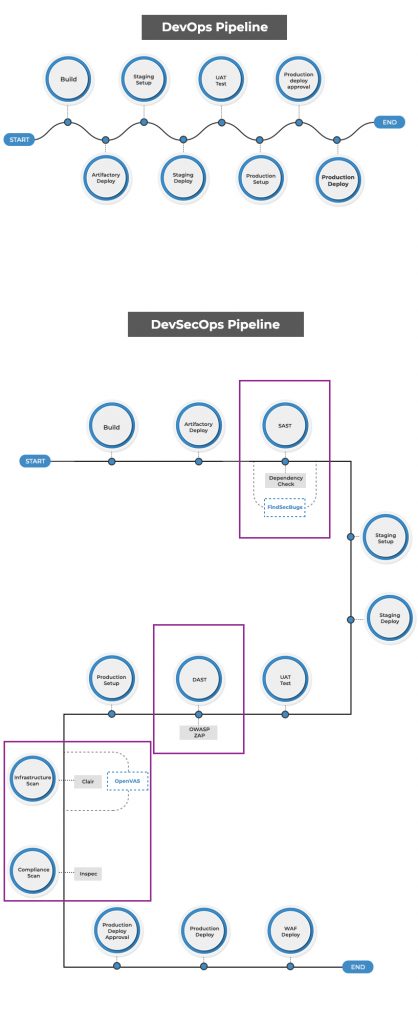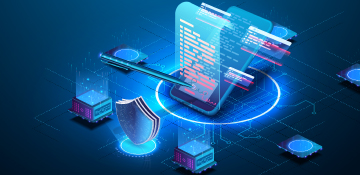For some time now, asset managers have been looking at ways to net greater profits by optimizing back-office operations. The clamor to convert back-office from a “cost-center” to a “profit center” is not recent. But it has increased with the growth of passive investment and regulatory controls. Moreover, as investment fees decline, asset managers look for ways to stay competitive.
Back-office is where AI and ML can drive massive business impact.
For most financial organizations considering a technology upgrade, it is the back office where they must start first. Whether reconciliation or daily checkout or counterparties, back-office processes are the “low-hanging fruits” where AI and ML can be embedded within existing architecture/tools without much hassle. The investment costs are reasonably low, and financial organizations are generally assured of an ROI if they choose the appropriate third-party vendor with expertise in handling such transitions.
Tasks in the back-office that AI can replace
AI can best be applied to tasks that are manual, voluminous, repetitive, and require constant analysis and feedback. This makes back-office operations/processes a safe bet for AI, ML, and NLP implementation.
The amount of work that goes behind the scenes in the back office is exhaustive, never-ending, and cumbersome. Back-office operatives are aided in their endeavors by core accounting platforms. Accounting platforms, however, provide the back-office operator with information and data only. Analysis of data is primarily a manual activity in many organizations. As a result, the staff is generally stretched and has no time to add value. Silos further impede process efficiency, and customer satisfaction suffers as the front, back, and middle offices are unable to work in tandem.
While there is no supplementing human intelligence, the dividends that accrue when AI is adopted are considerable. Efficiency and downtime reduction boost employee and organization morale while driving revenue upstream.
This blog will consider a few use cases from the back-office where AI and ML can play a significant role, focusing on instances where Magic FinServ was instrumental in facilitating the transition from manual to AI with substantial benefits.
KYC: Ensuring greater customer satisfaction
Data that exists in silos is one of the biggest challenges in fast-tracking KYC. Unfortunately, it is also the prime reason behind a poor customer experience. The KYC process, when done manually, is long and tedious and involves chasing clients time and again for the information.
With Magic DeepSight’s™ machine learning capabilities, asset managers and other financial institutions can reduce this manual effort by up to 70% and accomplish the task with higher speed and lower error rate, thereby reducing cost. Magic DeepSight™ utilizes its “soft template” based solution to eliminate labor-intensive tasks. It has enabled several organizations to reduce the time taken for KYC and overall improve SLAs for new client onboarding.
Reconciliation: Ensuring quicker resolution
As back-office operations are required to handle exceptions quickly and accurately, they need manual effort supplemented by something more concrete and robust. Though traditional tools carry out reconciliation, many organizations still resort to spreadsheets and manual processes, and hence inconsistencies abound. As a result, most organizations manually reconcile anywhere between 3% to 10% volume daily.
So at Magic FinServ, we designed a solution that can be embedded/incorporated on top of an existing reconciliation solution. This novel method reduces manual intervention by over 95% using artificial intelligence. This fast-tracks the reconciliation process dramatically, ensures quicker time to completion, and makes the process less error-prone. Magic FinServ implemented this ‘continuously learning’ solution for a $250B AUM Asset Manager and reduced the trade breaks by over 95%.
Fund Accounting: Ensuring efficiency and productivity
Fund accounting can be made more efficient and productive with AI. Instead of going through tons of data in disparate formats, by leveraging the powers of AI, the back office can analyze information in income tax reports, Form K-1 tax reports, etc., at a fraction of time taken manually and make it available for dissemination. For example, Magic FinServ’s Text Analytics Tool, which is based on Distant Supervision & Semantic Search, can summarize almost any unstructured financial data with additional training. For a Tier 1 investment bank’s research team that needed to fast-track and made their processes more efficient, we created an integrated NLP-based solution that automated summarizing the Risk Factors section from the 10-K reports.
Invoice and Expense Automation: Eliminating the manual effort
Automated invoice processing is the answer for organizations that struggle with a never-ending backlog of invoices and expenses. An AI integrated engine captures and extracts invoice and expense data in minutes. Without setting new templates and rules, data can be extracted from different channels. There’s also the advantage of automated learning facilitated by the AI engine’s self-learning and validation interface.
Magic FinServ used its sophisticated OCR library built using Machine Learning to get rid of manual effort in uploading invoices to industry-standard invoice & expenses management applications. Another Machine Learning algorithm was able to correctly determine General Ledger code to tag the invoice against an appropriate charge code correctly, and finally, using RPA was able to insert the code on the invoice.
Streamlining corporate actions operations:
Corporate actions are one of the classic use-cases for optimization using AI. Traditionally, most corporate actions have been done manually, even though they are low-value activities and can mostly be automated with suitable systems. However, whether it is managing an election process with multiple touchpoints or disseminating accurate and complete information to stakeholders and investment managers, the fallout of missing an event or misreporting can be considerable. One way to reduce the risk is to receive notifications from more than one source. But that would compound the back-office workload as they would have to record and reconcile multiple notifications. Hence the need for AI.
Magic FinServ’s AI solution streamlines several routine corporate action operations delivering superior quality. The AI system addresses inefficiencies by reading and scrubbing multiple documents to capture the corporate action from the point of announcement and create a golden copy of the corporate action announcement with ease and efficiency. This takes away the need for manual processing of corporate action announcements saving up to 70% of the effort. This effort can be routed to other high-risk and high-value tasks.
Conclusion:
Back-office automation drives enormous dividends. It improves customer satisfaction and efficiency, reduces error rates, and ensures compliance. Among the five technology trends for banks (for 2020 and beyond), the move towards “zero back offices” – Forrester report, is a culmination of the increasing demand for process automation in the back office. “Thirty percent of tasks in a majority of occupations can be automated, and robotics is one way to do that. For large back offices with data-entry or other repetitive, low judgment, high-error-prone, or compliance-needy tasks, this is like a panacea.”McKinsey Global Institute. For a long time, we have also known that most customer dissatisfaction results from inadequacies of back-office. As organizations get ready for the future, there is a greater need for synchronization between the back, middle, and front office. There is no doubt that AI, ML, and NLP will play an increasingly more prominent role in the transition to the next level.











